From the very beginning, with the first urban settlements of Mesopotamia around 4500 BC, cities have required a clean water supply and some form of sanitation. As cities grew in size, the water supply tended to be sourced from further afield, with examples of aqueducts bringing clean water great distances from upland reservoirs or aquifers, where flows were reliable. Although the earliest cities had sewers and cesspits, treatment came much later, and it wasn’t until late in the 19th century, after cholera pandemics killed millions and scientists began to develop the germ theory of disease, that engineers created artificial filter-bed microbial ecosystems to treat sewage. The problem persists: there are still hundreds of major cities in the world that do not treat their sewage.
Cities, therefore, are part of a destructive, linear process, where water is brought from what is often a relatively “natural” area some distance from the city to be consumed, polluted, and then discharged into watercourses or the ocean. The consumption of water in the city has many profound impacts across a wide area. Pristine streams are dammed to create upland reservoirs. Dams prevent the migration and spawning of fish, forests are flooded, and silt, which once fed floodplains, is trapped behind dams. The pumping and treatment of water using electricity generated by burning coal or gas produces carbon dioxide. Once consumed by households and businesses and sullied, water is treated (using more energy) or perhaps not treated and then discharged, where further damage to aquatic ecosystems occurs. The excess of nutrients in wastewaters contributes towards eutrophication, with algal blooms, plunging oxygen levels, and the loss of the majority of species that require relatively clean water. The seas near some major conurbations are dead zones. Most of the plastic garbage in the world’s oceans originates from cities and enters the sea via rivers. Problems with city water supplies and associated impacts are predicted to become more severe because of population growth and climate change, which will increase the likelihood of drought in most regions. Civilizations—including that of the Mayans, for example, which ended around a thousand years ago—have collapsed because of prolonged drought.
Fixing these problems will involve a changing attitude towards water, preferably before severe shortages bite. There is much to do, but already there are plenty of good examples to follow. Instead of constantly seeking more sources of clean water (which are, in any case, dwindling), we need to seek ways of reducing demand, collecting rainwater in cities, and recycling wastewater. Much water is wasted before it even reaches the consumer and much can be done to find leaks (through improved metering and smart monitoring) and to make prompt repairs. For example, Tokyo, a city of 12 million people, was able to reduce leaks in its water supply network from 150 million cubic metres of water a year in 2000 to 68 million cubic metres a decade later.
The collection of rainwater is most commonly organized on a building-scale, with water directed from roofs into storage tanks and re-used for toilet flushing and other non-potable uses. Good progress has been made in recent years, with accreditation schemes such as LEED and BREEAM encouraging rainwater harvesting in new developments and states (like Tamil Nadu in India) making it mandatory. Singapore considers the whole city as a catchment for harvesting rainwater, with surface water drains channeling rainwater to several water bodies (including former estuaries), where water can be abstracted and treated for re-use.
When city authorities begin to consider the fabric of the city itself as a rainwater collection facility, this changes the way people design and operate the urban landscape. Efforts to reduce pollution become more intensive and finding ways of filtering and cleaning run-off can lead to new, well-funded, and strategically positioned green infrastructure interventions. Recycling wastewater is another way of reducing abstraction from the wider environment. In many jurisdictions, this process is forbidden or frowned upon, because of fears over public health; however, greywater (that is, lightly polluted water from showers and washbasins) can be easily cleaned (by using sand or membrane filters) to a state where it can be safely used for toilet flushing or irrigation. Toilet flushing can constitute up to 30 percent of domestic water consumption and greywater could be a reliable way of meeting this need.
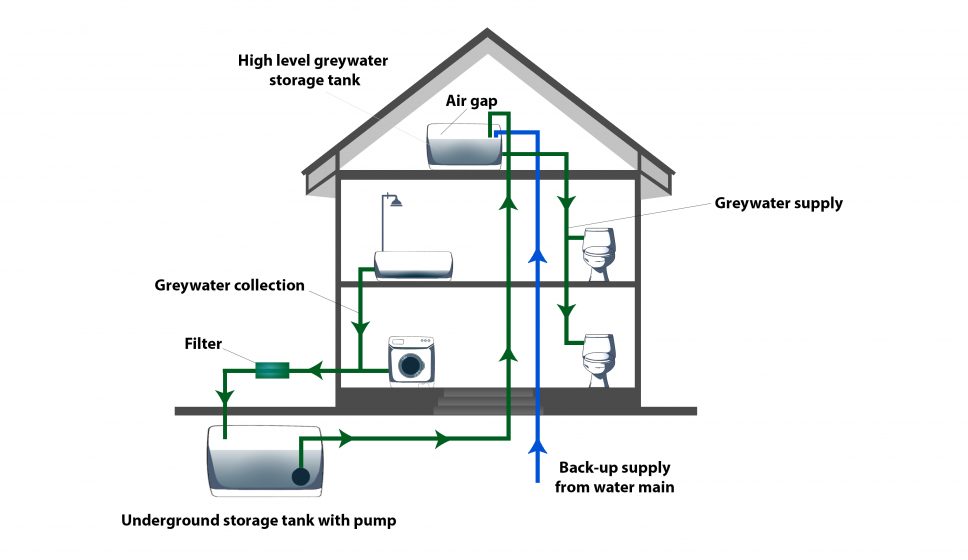
Having considered the supply, consumption, treatment, and discharge of water and the wider implications of water use in cities, it is also important to think about the way water moves on and through the surface of the city itself. For example, until very recently, rain has been considered a substance that needs to be channeled away from buildings and streets and into pipes as quickly and efficiently as possible. This creates a number of problems, including downstream flooding, polluted watercourses, efforts to turn natural watercourses into concrete-lined drains, hot and dry buildings and streets, and biodiversity losses. Now, people are coming to realize that restoring ecosystems in urban areas and holding water in soil and vegetation within the urban fabric has many benefits.
This begins where the raindrops land on the roofs. If the roof has a well-designed green (or living) roof, it will include sufficient free-draining yet water-absorbing substrate (growing medium) to hold more than half of the water that lands upon it in any given year. Ultra-shallow green roofs should be avoided wherever possible because little water is intercepted and the roof tends to dry out to a point beyond which the parched vegetation cannot recover, even when rain returns. Water stored in the substrate of a green roof will be taken up by plants and transpired or evaporated directly from the substrate. Water lost through evapotranspiration is not wasted. It provides cooling, helping to reduce reliance on energy-hungry air conditioning. The evaporation from soils also proves useful when green roofs are combined with photovoltaic (or PV) panels (biosolar roofs). The cooling effect of the green roofs helps to keep the PVs close to their most efficient, optimum operating temperature. Green roofs can combine to improve the microclimate in whole neighbourhoods by reducing the urban heat island effect, preventing the sun’s energy from being absorbed into the dense materials of buildings and re-radiated at night.
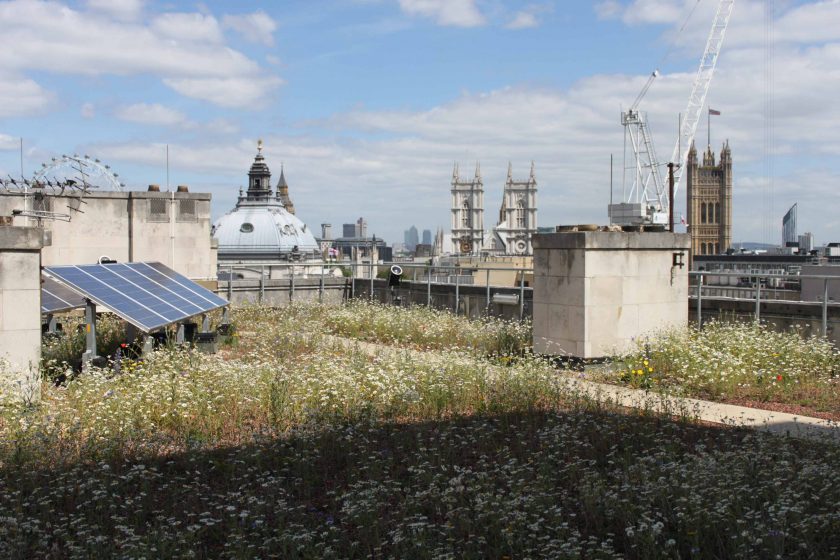
Once water has left a green roof, it can be collected, stored and used for irrigation or directed into rain gardens, tree pits or similar green infrastructure elements. Rain gardens are landscape features designed to receive surface water or rainwater from downpipes. These interventions need to be created in places where they will readily receive water and must be free draining. Ideally, one rain garden overflows into another in a chain of features that, in combination, reduces the volume of water that enters watercourses. Water can evaporate from rain gardens, providing cooling in the way that green roofs do, and any water that flows out of rain gardens has been cleaned by the action of soil microbes. By directing rainwater from downpipes into planted features, it is often possible to eliminate or reduce the need for artificial irrigation. An example is the vertical rain garden on Tooley Street in London. Water from the roof of an apartment block is directed into tanks behind a living wall. Water enters the substrate of the living wall by wicking. Any excess water can overflow to the conventional drains; however, the volume of water entering the drains and contributing to the risk of localized surface water flooding is reduced. The wall has recently been doubled in size after more than a year of operation. See http://www.landscapeinstitute.org/news/London-Bridge-home-to-revolutionary-rain-garden
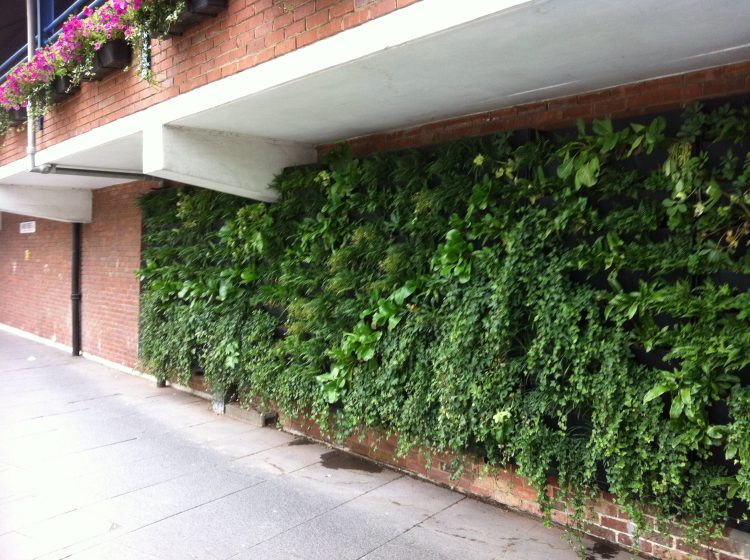
Following prolonged or heavy rainfall, water that has not been intercepted and stored in cisterns, or the soils of green roofs or rain gardens, will eventually find its way into watercourses. When watercourses were considered no more than sewers, they were often placed underground. Where watercourses were too large to be put into pipes, they were often lined with masonry or concrete, thereby removing most of their ecological value. Although most urban rivers lost and damaged in these ways remain lost and damaged, there are now examples of rivers exposed once more to the sun, the so-called day-lighted rivers like, for example, the Saw Mill River in Yonkers. Where rivers have been straightened and vegetated margins erased, the process can be reversed through river restoration. City dwellers can begin to renew their acquaintance with rivers and can enjoy spending time close to what may be the most natural feature in their neighbourhoods. Linear features like watercourses can also become important corridors, part of a wider green grid that links together neighbourhoods and parks with footpaths and cycleways, helping to make the city more permeable to both people and wildlife.
The citizens of the water-sensitive city must bring together all these ideas and features as part of an ecosystem approach. The ecosystem approach (as advocated by the Convention on Biological Diversity) means people working together and working with the grain of nature so that a full range of ecosystem services is provided within the built environment as well as the wider countryside. The city needs to be considered as part of a wider ecosystem, watershed, and bio-region. This will require better cooperation between jurisdictions (sometimes across borders), sectors, and professionals, as well as full citizen participation. Everyone will need to be much more ecologically minded and water-wise. The idea of bringing much more soil, water, vegetation, and wildlife into cities will become mainstream. By thinking more carefully about water, whether it is in pipes, tanks and sewers, or the open-air ecosystems of the city’s green and blue infrastructure, urban areas will become more resilient to climate change. Water-sensitive cities will be kinder and calmer places to live, with people more closely connected to nature.
Gary Grant
London
Gary Grant’s new book, which expands on the themes touched on in this article, is The Water Sensitive City, published in April 2016 by Wiley. Check it out here. Also available is Ecosystem services come to town – greening cities by working with nature, published by Wiley in 2012.
About the Writer:
Gary Grant
Gary Grant is a Chartered Environmentalist, Fellow of the Institute of Ecology and Environmental Management, Fellow of the Leeds Sustainability Institute, and Thesis Supervisor at the Bartlett Faculty of the Built Environment, University College London. He is Director of the Green Infrastructure Consultancy (http://greeninfrastructureconsultancy.com/).

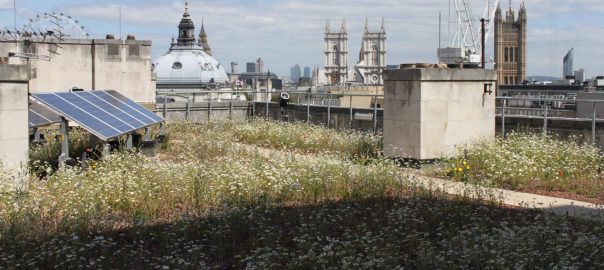








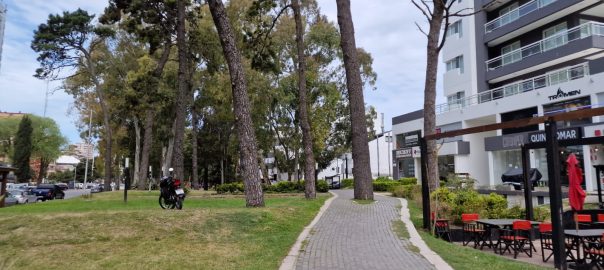

Add a Comment
Join our conversation